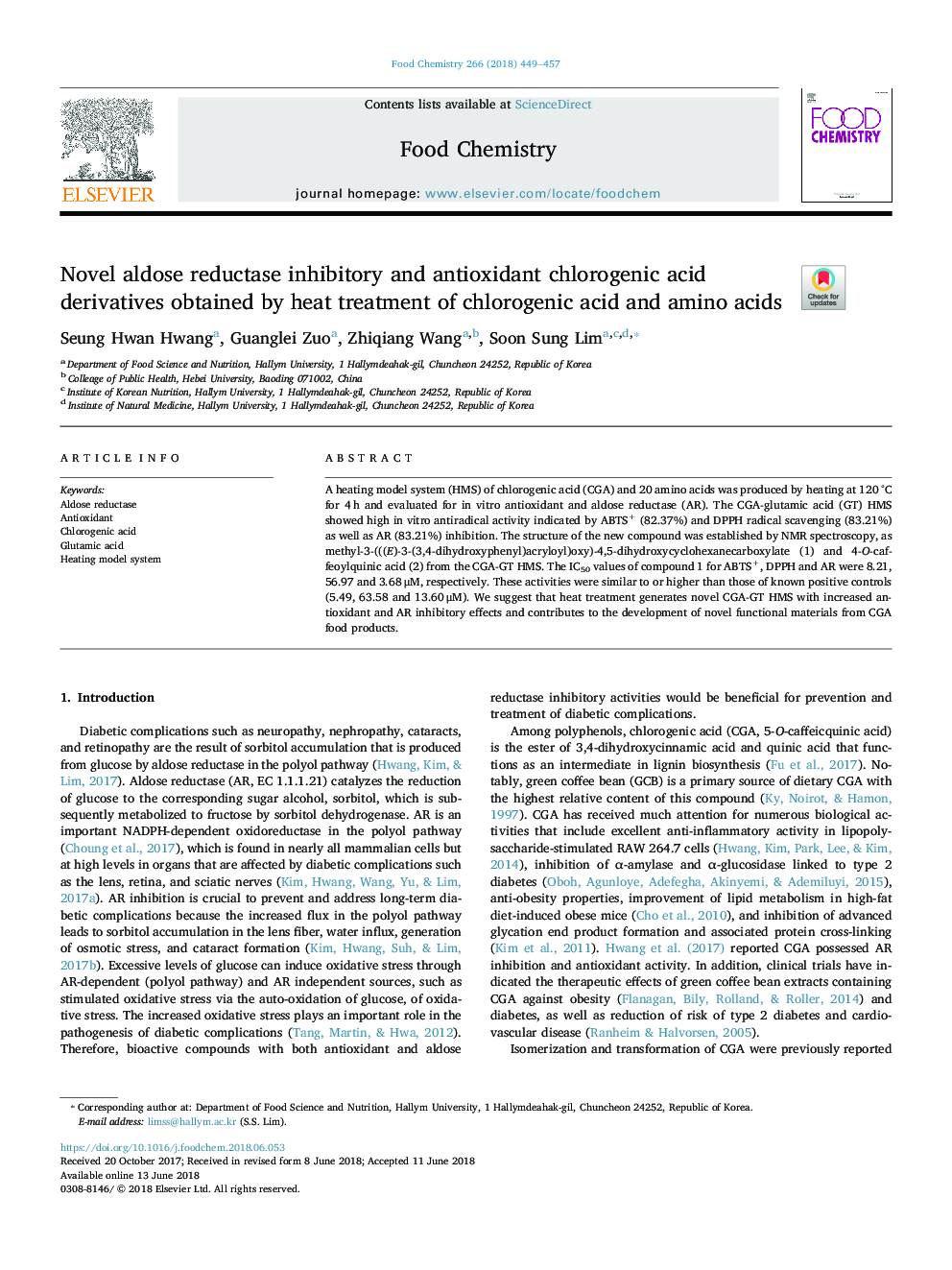| Article ID | Journal | Published Year | Pages | File Type |
|---|---|---|---|---|
| 7584576 | Food Chemistry | 2018 | 9 Pages |
Abstract
A heating model system (HMS) of chlorogenic acid (CGA) and 20 amino acids was produced by heating at 120â¯Â°C for 4â¯h and evaluated for in vitro antioxidant and aldose reductase (AR). The CGA-glutamic acid (GT) HMS showed high in vitro antiradical activity indicated by ABTS+ (82.37%) and DPPH radical scavenging (83.21%) as well as AR (83.21%) inhibition. The structure of the new compound was established by NMR spectroscopy, as methyl-3-(((E)-3-(3,4-dihydroxyphenyl)acryloyl)oxy)-4,5-dihydroxycyclohexanecarboxylate (1) and 4-O-caffeoylquinic acid (2) from the CGA-GT HMS. The IC50 values of compound 1 for ABTS+, DPPH and AR were 8.21, 56.97 and 3.68â¯Î¼M, respectively. These activities were similar to or higher than those of known positive controls (5.49, 63.58 and 13.60â¯Î¼M). We suggest that heat treatment generates novel CGA-GT HMS with increased antioxidant and AR inhibitory effects and contributes to the development of novel functional materials from CGA food products.
Related Topics
Physical Sciences and Engineering
Chemistry
Analytical Chemistry
Authors
Seung Hwan Hwang, Guanglei Zuo, Zhiqiang Wang, Soon Sung Lim,
